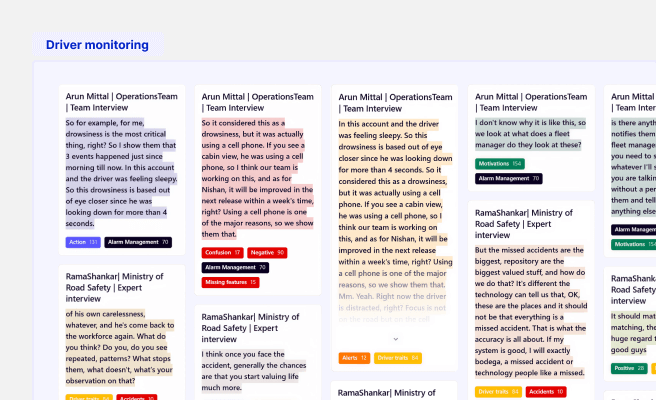Divergent Thinking
<p>Divergent thinking is a cognitive process used to generate creative ideas by exploring many possible solutions. This method encourages thinking in a non-linear, free-flowing manner, typically resulting in a wide array of unique and varied ideas. Divergent thinking is essential in fields that require innovation and creative problem-solving, such as product design, marketing, and strategic planning.</p>
<p>Historically, divergent thinking has been a cornerstone of creative disciplines, driving breakthroughs by allowing individuals and teams to consider unconventional solutions. It contrasts with convergent thinking, which focuses on finding a single, correct answer to a problem. Both types of thinking are crucial, but divergent thinking is particularly valued for its role in innovation and creativity.</p>
<h2>Components of Divergent Thinking</h2>
<p>Divergent thinking comprises several key components:</p>
<ul>
<li><strong>Fluency:</strong> The ability to produce a large number of ideas.</li>
<li><strong>Flexibility:</strong> The capacity to approach a problem from various perspectives.</li>
<li><strong>Originality:</strong> The tendency to generate novel or unique ideas.</li>
<li><strong>Elaboration:</strong> The skill to expand on ideas in detail.</li>
</ul>
<h2>Benefits of Divergent Thinking</h2>
<p>Divergent thinking offers numerous benefits, particularly in creative fields and industries:</p>
<ul>
<li>Enhances creativity by encouraging the generation of multiple ideas.</li>
<li>Fosters innovation through the exploration of unconventional solutions.</li>
<li>Improves problem-solving abilities by considering a broad range of possibilities.</li>
<li>Encourages a collaborative mindset, as diverse ideas often lead to better outcomes.</li>
</ul>
<h2>Practical Applications of Divergent Thinking</h2>
<p>Divergent thinking can be applied in various ways across different industries. Here are a few examples:</p>
<p><strong>Product Design:</strong> Designers use divergent thinking to brainstorm features that enhance user experience. For instance, a <a href="https://www.ideo.com/" style="color:#2896FF; text-decoration: underline;">design firm</a> might explore multiple materials and technologies to create a sustainable product.</p>
<p><strong>Marketing:</strong> Marketers employ divergent thinking to develop creative campaigns that capture audience attention. This process might involve considering diverse channels and message styles to reach target demographics effectively.</p>
<p><strong>Climate Tech:</strong> Companies in the climate tech sector leverage divergent thinking to address environmental challenges. For example, a startup focused on <a href="https://carbon180.org/" style="color:#2896FF; text-decoration: underline;">carbon capture</a> might brainstorm innovative methods to reduce emissions and enhance sustainability.</p>
<h2>Challenges in Implementing Divergent Thinking</h2>
<p>While divergent thinking is beneficial, it also comes with challenges:</p>
<ul>
<li>Requires a supportive environment that encourages creativity and risk-taking.</li>
<li>Can be time-consuming, as it involves exploring many ideas before converging on a solution.</li>
<li>May lead to idea overload, making it difficult to prioritize and select the best options.</li>
</ul>
<h2>Overcoming Challenges</h2>
<p>To effectively implement divergent thinking, consider the following strategies:</p>
<ul>
<li>Foster a culture of creativity where team members feel safe to share unconventional ideas.</li>
<li>Use structured brainstorming techniques, such as mind mapping or the <a href="https://en.wikipedia.org/wiki/Six_Thinking_Hats" style="color:#2896FF; text-decoration: underline;">Six Thinking Hats</a> method, to guide the process.</li>
<li>Encourage regular breaks and a relaxed atmosphere to stimulate creative thinking.</li>
<li>Combine divergent thinking sessions with convergent thinking to refine and select the best ideas.</li>
</ul>
<h2>Conclusion</h2>
<p>Divergent thinking is a powerful tool for fostering creativity and innovation across various industries. By embracing this approach, organizations can explore a wide range of solutions and drive significant advancements in their fields. Whether in product design, marketing, or climate tech, the ability to think divergently can lead to breakthrough ideas and improved outcomes.</p> <p>To understand the power of design across industries and sectors, view our diverse portfolio of works. <a href="https://www.whatifdesign.co/work" style="color:#2896FF; text-decoration:underline;">View our portfolio</a>.</p> <p>If you’re looking for inspiration to elevate customer and user experience for enterprise-grade products, View our work with the Ministry of Health of Saudi Arabia for curating the UX of an <a href="https://www.whatifdesign.co/work/enterprise-software-for-hospitals" style="color:#2896FF; text-decoration:underline;">Asset Management Tracking Platform</a></p>
<p>Ready to get started? <a href="https://cal.com/akhilak/what-if-design?duration=30" style="color:#2896FF; text-decoration:underline;">Book a 1:1 consultation call</a> with us today.</p>

Let's scale your impact with great design.
Free consultation, no sales pitch
Thank you! Your submission has been received!
Oops! Something went wrong while submitting the form.
Let’s talk
Nothing great is built alone.
Let’s connect about your vision, our work and how we can collaborate.
Get in touch

